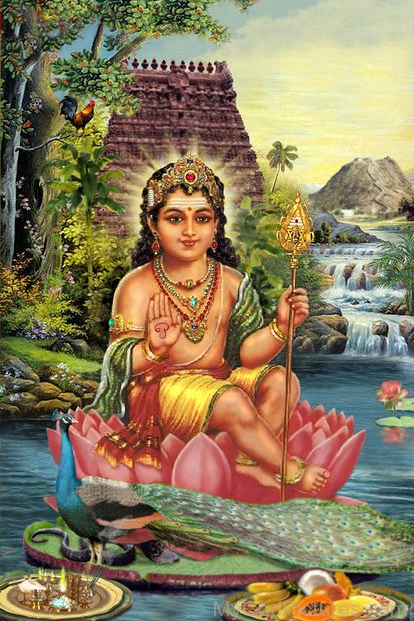Kartikeya


Kartikeya , also known as Murugan, Skanda, Kumara, and Subrahmanya, is the Hindu god of war. He is the son of Parvati and Shiva, brother of Ganesha, and a god whose life story has many versions in Hinduism. An important deity found all over the Indian subcontinent in its history, Kartikeya is particularly popular in South India, such as among the Tamil people.
Kartikeya is an ancient god, traceable to the Vedic era. Archaeological evidence from 1st-century CE and earlier,where he is found with Hindu god Agni (fire), suggest that he was a significant deity in early Hinduism. He is found in many medieval temples all over India, such as at the Ellora Caves and Elephanta Caves.
The iconography of Kartikeya varies significantly; he is typically represented as an ever-youthful man, riding or near a peacock, dressed with weapons sometimes near a rooster. Most icons show him with one head, but some show him with six heads reflecting the legend surrounding his birth where six mothers symbolizing the six stars of Pleiades cluster who took care of newly born baby Kartikeya. He grows up quickly into a philosopher-warrior, destroys evil in the form of demon Taraka, teaches the pursuit of ethical life and the theology of Shaiva Siddhanta. He has inspired many poet-sants, such as Arunagirinathar.
Kartikeya, as Murugan or Subrahmanya, is found as a primary deity in temples wherever communities of the Tamil people live worldwide, particularly in Sri Lanka, Mauritius, Indonesia, Malaysia, Singapore, South Africa and Réunion. Three of the six most richest and busiest temples in Tamil Nadu are dedicated to him. The Kataragama temple dedicated to him in Sri Lanka attracts Tamils, Sinhalese people and the Vedda people. He is also found in other parts of India, sometimes as Skanda, but in a secondary role along with Ganesha, Parvati and Shiva.